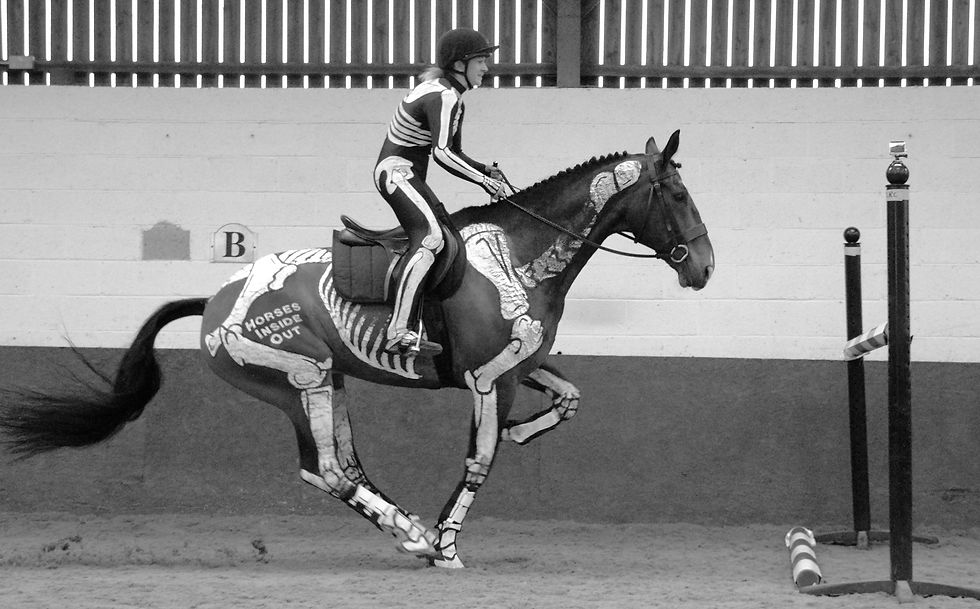The Biomechanics of Jumping
- Gillian Higgins

- Dec 2, 2018
- 1 min read
Updated: Nov 30, 2022

Although the musculoskeletal system comes under enormous strain when jumping, jumping is also good for mobility, suppleness, agility, coordination and developing reaction, power and strength. The size, type and arrangement of jumps and poles all affect the way the horse uses himself over a fence.
"The more we can learn about jumping the better we will be able to reduce the risk of injury and improve jumping technique." says Gillian, "This is something I cover in detail in some of my video based talks and on courses."


The forces through the limbs at take off and landing are many times the horses body weight.
The tendons and ligaments painted on the lower limb really helps to illustrate which structures come under most strain in these moments. Stretch and recoil of connective tissue structures contributes to the ability of the horse to jump and land effectively.
The slow motion, high-definition, close-up video versions of these photos are used at Gillian's courses and events particularly the Biomechanics Courses.

With the addition of a rider the horse must cope with increased forces through his limbs. More power is required to jump and his balance is challenged.
It is vitally important to continually work on our own posture and position.
Studying rider's in the skeleton bodysuits helps us to appreciate how we can move our own bodies to best help the horse. Slow-motion, high-definition, and close-up footage is available to view at Horses Inside Out courses and events.
If you would like to learn more check out Anatomy in Action



Comments